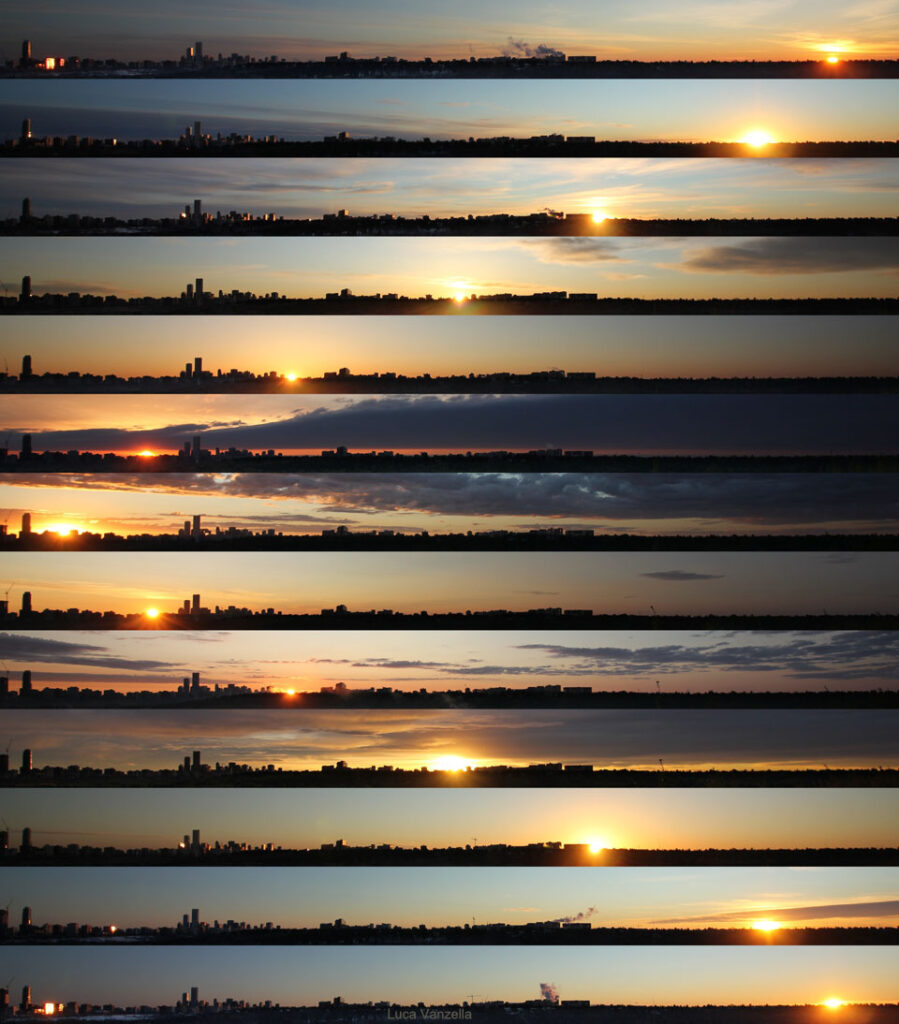
This photograph (found on NASAs website) highlights the 12 months of the year. The year starts on the fourth slide down, known as the fourth great gate in Enochs account in his book. The gaps between are recorded as gates by Enoch.
The Book of Enoch – Chapter 71 (if you do not want to read the scripture, there is a clear and concise summary at the bottom of this page)
Enoch Chapter 71 describes the sun and its annual behaviour, we start at verse nine:
9. In the same manner it (the sun) goes forth in the first month by a great gate.
10. It goes forth through the fourth of those six gates, which are at the rising of the sun.
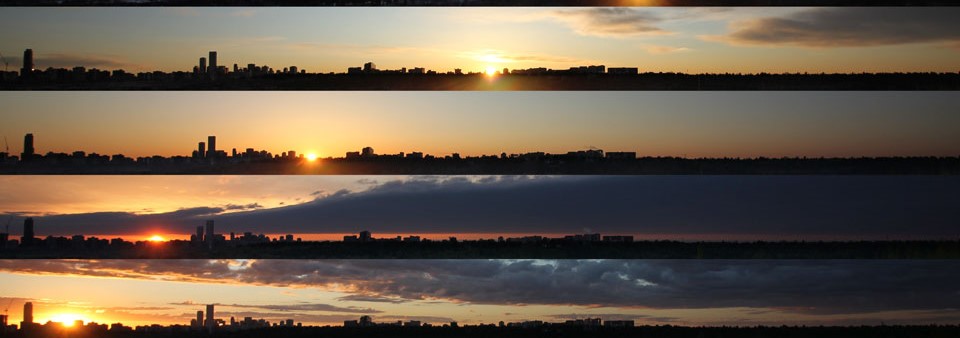
11. And in the fourth gate, through which the sun with the moon proceeds, in the first part of it, there are twelve open windows; from which issues out a flame, when they are opened at their proper periods.
12. When the sun rises in heaven, it goes forth through this fourth gate thirty days, and by the fourth gate in the west of heaven on a level with it descends.
13. During that period the day is lengthened from the day, and the night curtailed from the night for thirty days. And then the day is longer by two parts than the night.
14. The day is precisely ten parts, and the night is eight.
15. The sun goes forth through this fourth gate, and sets in it, and turns to the fifth gate during thirty days; after which it proceeds from, and sets in, the fifth gate.
16. Then the day becomes lengthened by a second portion, so that it is eleven parts: while the night becomes shortened, and is only seven parts.
17. The sun now returns to the east, entering into the sixth gate, and rising and setting in the sixth gate thirty-one days, on account of its signs.
18. At that period the day is longer than the night, being twice as long as the night; and becomes twelve parts;
19. But the night is shortened, and becomes six parts. Then the sun rises up, that the day may be shortened, and the night lengthened.
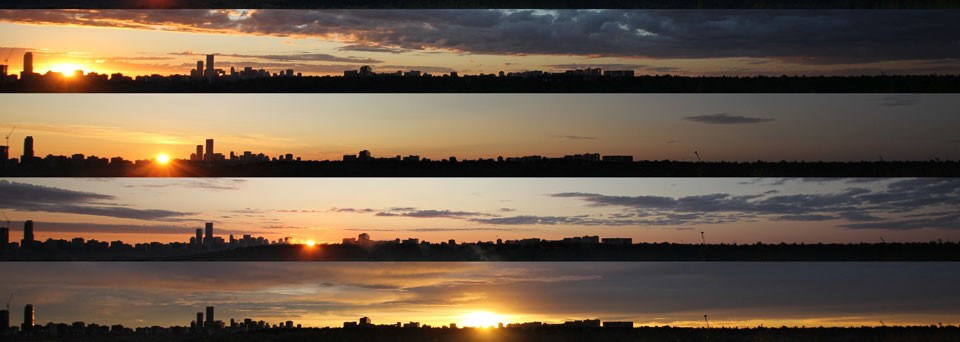
20. And the sun returns towards the east, entering into the sixth gate, where it rises and sets for thirty days.
21. When that period is completed, the day becomes shortened precisely one part, so that it is eleven parts, while the night is seven parts.
22. Then the sun goes from the west, from that sixth gate, and proceeds eastwards, rising in the fifth gate for thirty days, and setting again westwards in the fifth gate of the west.
23. At that period the day becomes shortened two parts; and is ten parts, while the night is eight parts.
24. Then the sun goes from the fifth gate, as it sets in the fifth gate of the west; and rises in the fourth gate for thirty-one days, on account of its signs, setting in the west.
25. At that period the day is made equal with the night; and, being equal with it, the night becomes nine parts, and the day nine parts.
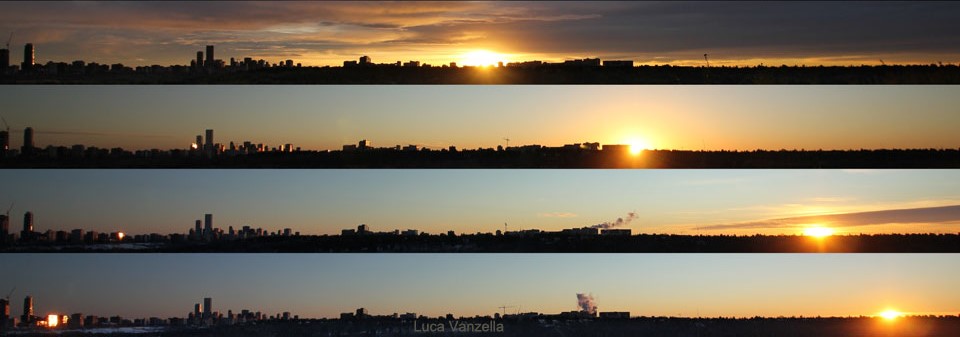
26. Then the sun goes from that gate, as it sets in the west; and returning to the east proceeds by the third gate for thirty days, setting in the west at the third gate.
27. At that period the night is lengthened from the day during thirty mornings, and the day is curtailed from the day during thirty days; the night being ten parts precisely, and the day eight parts.
28. The sun now goes from the third gate, as it sets in the third gate in the west; but returning to the east, it proceeds by the second gate of the east for thirty days.
29. In like manner also it sets in the second gate in the west of heaven.
30. At that period the night is eleven parts, and the day seven parts.
31. Then the sun goes at that time from the second gate, as it sets in the second gate in the west; but returns to the east, proceeding by the first gate, for thirty-one days.
32. And sets in the west in the first gate.
33. At that period the night is lengthened as much again as the day.
34. It is twelve parts precisely, while the day is six parts.
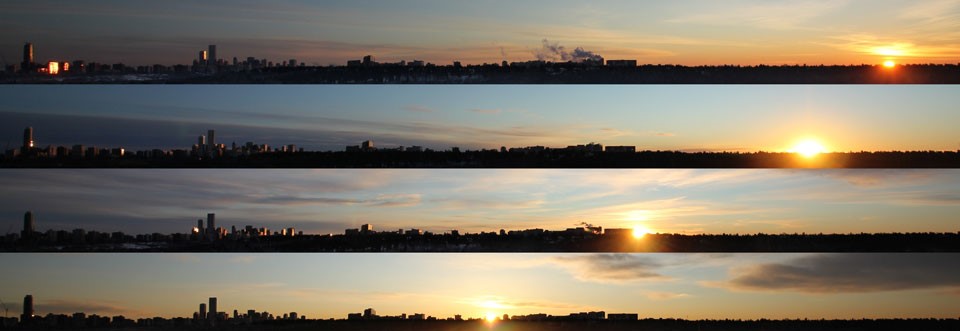
35. The sun has thus completed its beginnings, and a second time goes round from these beginnings.
36. Into that gate it enters for thirty days, and sets in the west, in the opposite part of heaven.
37. At that period the night is contracted in its length a fourth part, that is, one portion, and becomes eleven parts.
38. The day is seven parts.
39. Then the sun returns, and enters into the second gate of the east.
40. It returns by these beginnings thirty days, rising and setting.
41. At that period the night is contracted in its length. It becomes ten parts, and the day eight parts. Then the sun goes from that second gate, and sets in the west; but returns to the east, and rises in the east, in the third gate, thirty-one days, setting in the west of heaven.
42. At that period the night becomes shortened. It is nine parts. And the night is equal with the day. The year is precisely three hundred and sixty-four days.
43. The lengthening of the day and night, and the contraction of the day and night, are made to differ from each other by the progress of the sun.
44. By means of this progress the day is daily lengthened, and the night greatly shortened.
45. This is the law and progress of the sun, and its turning when it turns back, turning during sixty days, and going forth. This is the great everlasting luminary, that which he names the sun for ever and ever.
46. This also is that which goes forth a great luminary, and which is named after its peculiar kind, as God commanded.
47. And thus it goes in and out, neither slackening nor resting; but running on in its chariot by day and by night. It shines with a seventh portion of light from the moon; but the dimensions of both are equal
In Summary:
Each month, the sun spends 30 days within a gate
There are 4 seasons divided by either a vernal equinox, summer solstice or winter solstice – this accounts for the additional day at the end of each seasonal group of 3 months.
Spring season month 1= 30 days (the sun starts the year moving into gate 4, then proceeds to travel E to ENE along the horizon), month 2= 30 days (sun starts in gate 5 towards NE), month 3 = 31 days (sun starts in gate 6, then continues NE in gate 6) An extra day is included in this month allowing for the summer solstice ie the furthest extreme point of gate 6/ the suns turning about to go back through gate 6. This is the spring season equaling 91 days. Below is the season of spring with the months beginning at sunrise and sun moving across the horizon (east to north east). Each slide was taken at the month beginning.
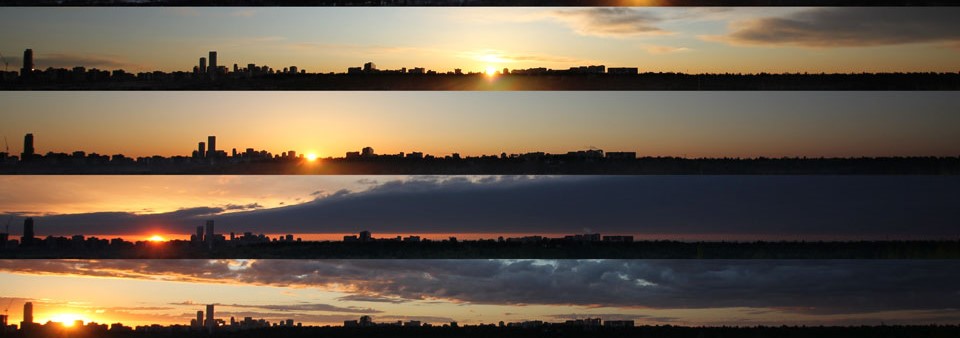
************
Summer season month 4 = 30 days (the sun moving back across gate 6 towards the east), month 5 = 30 days (the sun starts in gate 5 continues east), month 6 = 31 days (starts in gate 4 moves towards due east). An additional day added to allow for the vernal equinox ie equal day, equal night making the summer season a total of 91 days. Below is what the horizon looks like at sunrise in the months of summer.
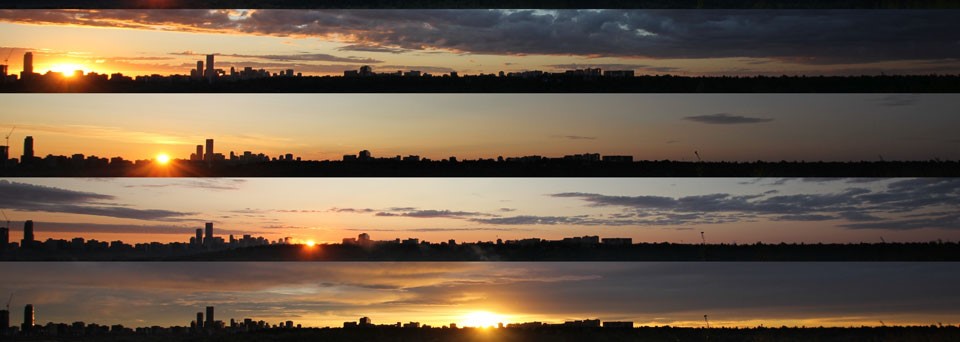
***************
Autumn season month 7 = 30 days (the sun starts in gate 3 and begins its journey south) month 8 = 30 days (starts in gate 2 continuing south) month 9 = 31 days (the sun starts in gate 1 continues to its furthest southerly extreme) An additional day is added in this month to allow the sun to turn about (winter solstice), giving the autumn season 91 days. Below are some slides of what each month should look like on your horizon.
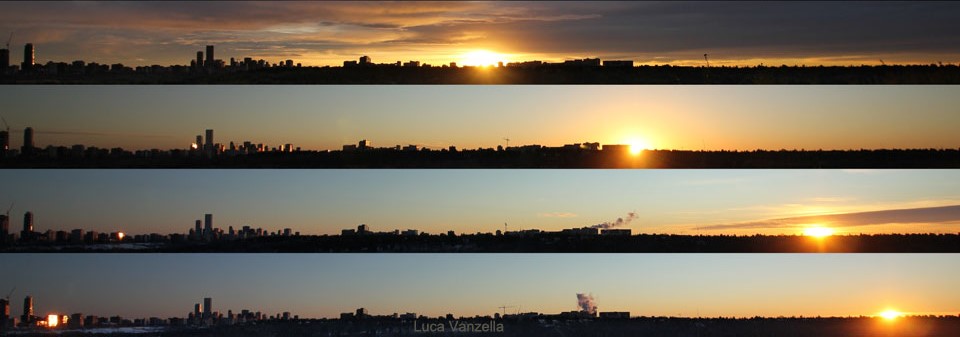
***************
Winter season month 10 = 30 days (the sun starts to move back across gate 1) month 11 = 30 days (the sun enters gate 2 and continues east) month 12 = 31 days (the sun starts in gate 3 to move due east). An additional day is added in this month to allow for the vernal equinox, making the winter season a total of 91 days. The slides below show what you should be seeing on your horizon each month.
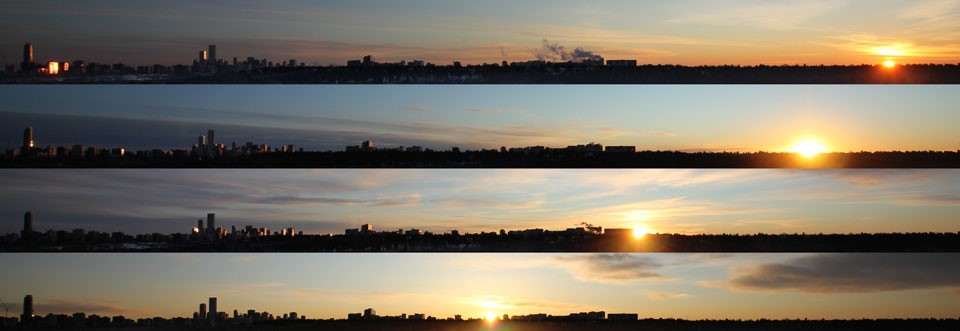
***********
Therefore, the Biblical Solar year is comprised of 4 seasons of 91 days = 364 days. Six gates are used in the year, each being occupied twice by the sun. An interesting point to note is that although there are six gates, there are 7 starting points, ie 7 lighting points, very much like the seven branched lamp stand in the temple. This lamp stand was to remain burning throughout the year with the east facing temple doors (facing the suns movements on the horizon) opened at sunrise on Sabbath days only.